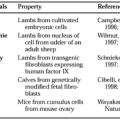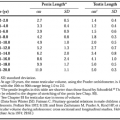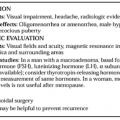AXIAL OSTEOMALACIA
Axial osteomalacia features defective bone mineralization despite normal serum levels of calcium and phosphate and increased alkaline phosphatase activity. Men seem to be affected more frequently than women; in one study,82 this disorder was found to be familial. The condition may be discovered incidentally; occasionally, patients present with a vague, chronic axial skeletal pain. Radiographic studies reveal osteo-sclerosis of the axial skeleton in which the trabecular pattern is coarse, as in other forms of osteomalacia.5 The appendicular skeleton appears unaffected, and Looser zones have not been reported. Features of ankylosing spondylitis may be present. Histopathologic studies of bone reveal osteoidosis and failure of tetracycline deposition but no evidence of secondary hyper-parathyroidism. Osteoblasts are inactive-appearing (flat) lining cells.82 Because the disorder seems to reflect a defect in the bone tissue, use of vitamin D and mineral supplementation is not recommended. No effective medical therapy exists.
Stay updated, free articles. Join our Telegram channel

Full access? Get Clinical Tree






